If you're new to this series you can read part one here.
Upper Deck released a 335-card flagship set in 1999-00, the smallest edition of their signature hockey product. Topps, Pacific, and In The Game were releasing far fewer products than Upper Deck - who owned roughly half of all NHL releases that season.
Six years and five seasons later, there was no competition. Upper Deck was granted an exclusive license to produce NHL trading cards as the league emerged out of the 2004-05 lockout.
Let's take a look at the company's growth over the first half of the decade, and the Young Guns subset's role in UD's domination.
1999-00 Upper Deck
base set: 335 cards
Young Guns: 8 cards
The return of Young Guns was a disjointed addition to an underwhelming set. The final 35 cards of Series One were short-printed. However, the Star Power subset seeped into the Young Guns section (or was it the opposite?) Just two of the subjects in the non-sequential Young Guns subset were true rookie cards - #1 overall pick Patrik Stefan and 11th overall pick Oleg Saprykin.
Stars/HOFers/Fan Favorites in this set: Roberto Luongo, Daniel Sedin, Henrik Sedin.
Who's that guy? Denis Shvidki was drafted 12th overall by the Florida Panthers in 1999. His NHL career lasted just 76 games - the fewest by far among the eight YG subjects in this set. Upper Deck doubled down on Denis, adding a second Shvidki single in the Series Two subset Prospects 2000.
Forgetting someone? Upper Deck's revival of the Young Guns brand highlighted lottery picks in what would prove to be a disappointing '99 NHL entry draft. The fourth-highest scorer from this draft, 212th pick Radim Vrbata, appeared in 1999-00 Topps sets but UD didn't include him in any of their products.
2000-01 Upper Deck
base set: 440 cards
Young Guns: 80 cards
Finally, we have arrived at the point Upper Deck's flagship hockey set and the Young Guns brand takes its current form. (Almost.) The Series One set is comprised of 180 veteran base cards, followed by 50 short-printed YGs inserted at a rate of 1 per 4 packs. Series Two contains 180 veteran base cards, followed by 30 short-printed YGs. All other subsets have been removed from either series.
Stars/Fan Favorites in this set: Dany Heatley, Marian Gaborik, Justin Williams, Scott Hartnell, Martin Havlat, Marty Turco.
Who's that guy? Damian Surma and Alfie Michaud played just two NHL games. Mike Minard entered just one NHL contest. But at least they made it to the show. Junior-age players could still receive rookie cards before making their debut, a practice that was soon abolished by the Players' Association. Three subjects in this set - Jeff Bateman, Marc-Andre Thinel, and Matt Zultek - never reached the NHL.
Who's that guy? (Part two) The idea of Young Guns is to highlight players at the beginning of their careers. Sometimes Upper Deck recognizes a longtime minor-leaguer who finally made it to the NHL after years of bus riding in the AHL or IHL. And then there's Greg Andrusak, who played nine games for the Maple Leafs in 1999-00 at age 30. It was his fifth (and final) NHL season.
Forgetting someone? Upper Deck could have filled out Series Two's shortened Young Guns subset with players like Shawn Horcoff, Andy McDonald, Mike Comrie, Johan Hedberg, and Ruslan Fedotenko instead of saving them for their Rookie Update product.
2001-02 Upper Deck
base set: 441 cards
Young Guns: 81 cards
We're getting off-track again. This Upper Deck set starts off like the prior year's - 180 veteran base cards, followed by a section of short-printed Young Guns. However, not all of the 51(?!?) subjects were rookies. Fifteen established stars received Young Guns Flashback cards. That was a deviation of the budding brand to begin with, but Upper Deck couldn't even get that right.
If the idea was to "flash back" to a star player's early years, some of the photos contradict this concept. Roman Cechmanek received a Young Guns flashback card one year after he was a Young Gun. And the veteran stars are interspersed with the newbies - not grouped together at the beginning or end.
And then there's Jared Aulin.
The NHL Players' Association closed the loophole allowing Upper Deck and other trading card companies to produce cards of players who hadn't yet played in the league. Aulin received a rookie card in '01-02 Upper Deck when he shouldn't have. The card was pulled early in production and replaced with... a flashback of veteran All-Star John LeClair.
Instead of learning from their mistake, Upper Deck leaned into it and produced photo variations for Series Two Young Guns - one set for hobby and one set for retail. So, in addition to producing two different cards for #220 and an odd number of Young Guns subjects (assuming both #220s count as one) every Series Two Young Gun has an alternate photo like the Pavel Datsyuk pictured above.
And, once again, Upper Deck included just 30 YGs in the Series Two set, rather than the 50 and 50 that has become the standard today. No one even though to create an even 40-40 split back then?
Stars/Fan Favorites in this set: Aside from the players who were already NHL stars before 2001? Well, there's Ilya Kovalchuk, Pavel Datsyuk, Erik Cole, and uh... Jody Shelley. Kovalchuk appears in the Series One YG portion (curiously at the end of the rookies block) and again in Series Two with a base card usually reserved for veteran players.
Who's that guy? Since Upper Deck was no longer allowed to produce cards of a player until he made his NHL debut, every Young Guns subject saw NHL action by rule. Sean Selmser, Stanislav Gron, and Greg Crozier played just one NHL game each, but this set is filled with several other obscure players with minimal major-league experience.
Forgetting someone? Stephen Weiss snuck into some 2001-02 Update sets after making his NHL debut on his 19th birthday, but it was far too late to be included in flagship Upper Deck. On the other hand, this clown could have qualified.
2002-03 Upper Deck
base set: 456 cards
Young Guns: 81 cards
Like the NHL and its Winter Classic series, Upper Deck took a popular new idea and turned it up to eleven. Subset cards, including Young Guns rookies, had been short-printed in the prior four flagship sets and inserted into packs at a rate of 1:4. That made completing a flagship hockey set challenging but doable.
In 2002-03, Upper Deck upped the ante and brought non-Young Guns subsets back. Fifteen Memorable Seasons SPs were inserted at a rate of 1 per 6 packs. Except...
Stars/Fan Favorites in this set: Rick Nash, Henrik Zetterberg, Tim Thomas, Ryan Miller, Jason Spezza. Oh and this jackass is here.
Who's that guy? Sebastien Centomo and Cody Rudkowsky saw NHL action in one game each. Former Beast of New Haven center Greg Koehler earned a Young Guns rookie card with 46 seconds of ice time for Carolina. That was 46 seconds more than Flames goalie Levente Szuper, whose entire NHL statline is posted on the back of this card. The Hungarian goalie's inclusion in 2002-03 sets was allowed because he dressed as a backup for nine contests.
Forgetting someone? Cristobal Huet was included in some 2002-03 sets such as Pacific Calder, Parkhurst Retro, and Be A Player. Upper Deck excluded him from their flagship set but included him in Premier Collection and Rookie Update. Craig Anderson (then listed as Andersson) could have been the last active player from the 2002-03 Young Guns class - if UD had included him in this set instead of Artistic Impressions or Honor Roll.
2003-04 Upper Deck
base set: 475 cards
Young Guns: 71 cards
The SSP experiment was quickly discarded, as Upper Deck retreated to the 1 per 4 formula and nixed veteran short prints. A slight interruption of the Series Two Young Guns block included three cards featuring the Heritage Classic (a precursor to the Winter Classic). These cards were not labeled as Young Guns but were short-printed at the same 1:4 odds and listed on the YG checklist closing out the set.
Stars/Fan Favorites in this set: Patrice Bergeron, Eric Staal, Dustin Brown, Brent Burns, and Marc-Andre Fleury all appear in Series One. Series Two Young Guns include Ryan Kesler and uh.. Trevor Daley.
Who's that guy? Julien Vauclair picked up one 'plus' and one minor penalty with Ottawa in his only NHL game. Seamus Kotyk dressed as a backup goalie for the Sharks but never played. He's now a goaltending coach for Craig Anderson's Sabres. Brent Krahn also received a Young Guns card without entering a game. The Flames' goalie of the future as a top ten pick in 2000 finally suited up for his one and only period of NHL action in 2009 - with the Dallas Stars.
Who's that guy? (Part two) Just so we're not completely focused on one-game wonders, tell me who this is:
Why, it's Mike Stuart of course! This Young Gun suited up for St. Louis three times, earning no points while committing no penalties and managing exactly one shot on goal. That's one more than you and I ever had, so show some respect for Mark Stuart here.
Oh wait, that's his brother. (Hello, Hockey-Reference.com? You're forgetting someone!)
Forgetting someone? I'm not saying that adding Tomas Plekanec or Jason Pominville to a lackluster Series Two roster would have helped Upper Deck sell caseloads of these cards... but good God, this checklist is imbalanced.
2004-05 Upper Deck
base set: 210 cards
Young Guns: 30 cards
The collective barganing agreement reached in time to salvage a shortened 1994-95 season expired on September 15, 2004. Owners locked out the players the next day, threatening the 2004-05 season. With no resolution in sight, only four hockey card sets containing current players were released - Pacific's final flagship set and three Upper Deck issues: Ultimate Collection, SP Authentic, and a truncated flagship set.
To fill out the Young Guns subset, Upper Deck went Retro with another round of veteran legends. This time, the photos were more in line with each player's rookie season. Also, the award for oldest subject to be crowned a "Young Gun" goes to Lord Stanley of Preston, who received his rookie card as a seasoned 163 year-old.
Stars/Fan Favorites in this set: LOL. Next question.
Who's that guy? Brad Fast scored a goal in his only NHL contest. Brennan Evans appeared in two playoff games for Calgary in 2004 (what's with all the Flames prospects making this list?) They are the only two true rookies that appear in this set. Some non-playing subjects with less familiar names include Denis Brodeur (photographer/Martin's dad), Bob Goodenow (then-leader of NHL players' union) and Alexander Ragulin, listed as an "All-Star Russian Player" on his Young Guns card.
Forgetting someone? Sharks center Marcel Goc was included in three of the year's four current player sets. The only one that excluded him was flagship Upper Deck. Layne Ulmer, Mel Angelstad, and Garret Stroshein were the only other rookies included in 2004-05 sets. Along with Fast and Evans, those five players appeared in a total of nine NHL contests including playoffs. Meanwhile, Marcel Goc appeared in 699 regular season and playoff games over his 10-year career.
Upper Deck advertised this set as Series One, holding out hope that a resolution between the players and owners could save the 2004-05 season. If an agreement had been made, this set would have had a monster Young Guns checklist for Series Two - a complete inverse of the prior year's offering.
Instead, those rookies would have to wait until the 2005-06 season to make their debut. This backlog would create excitement around the NHL - and one of the most popular hockey card sets ever made.
To be continued....
Thanks for reading!
~
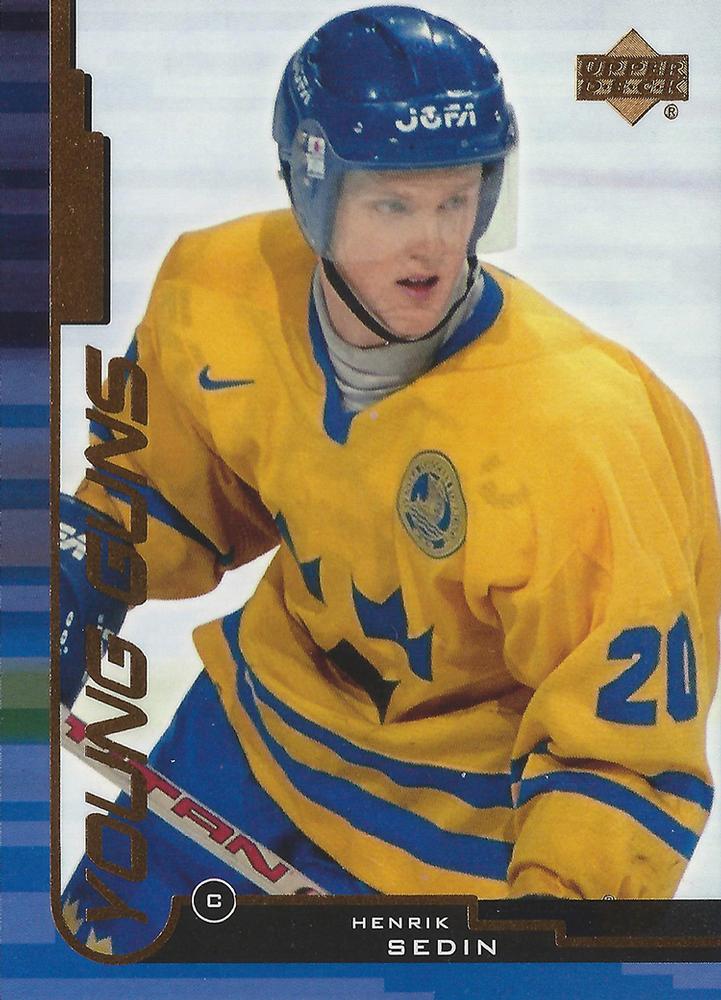
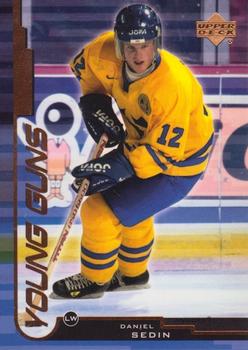
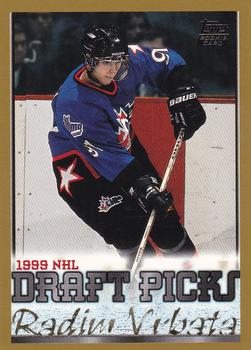
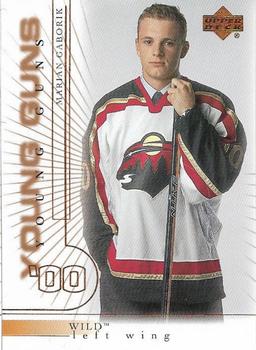
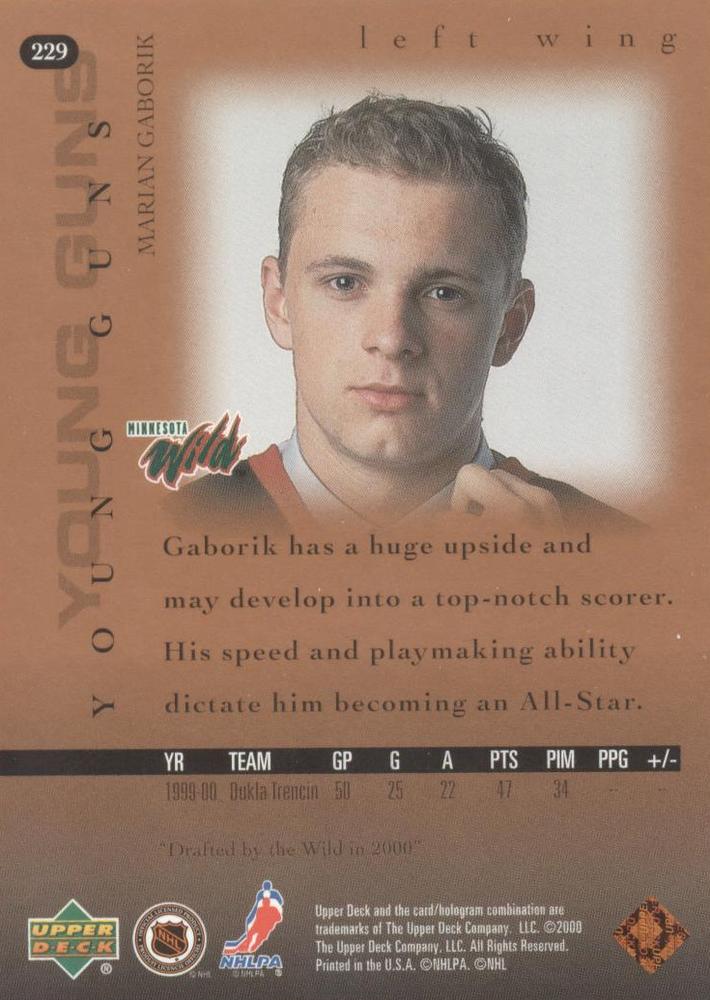
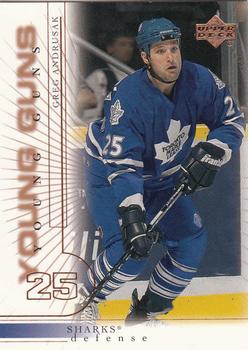
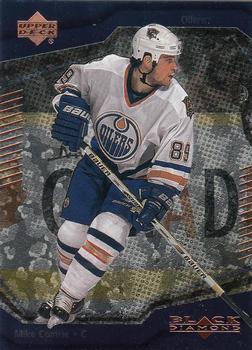
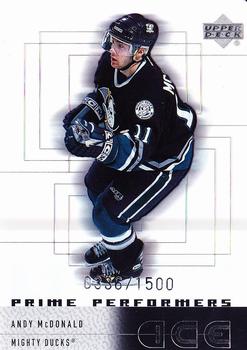
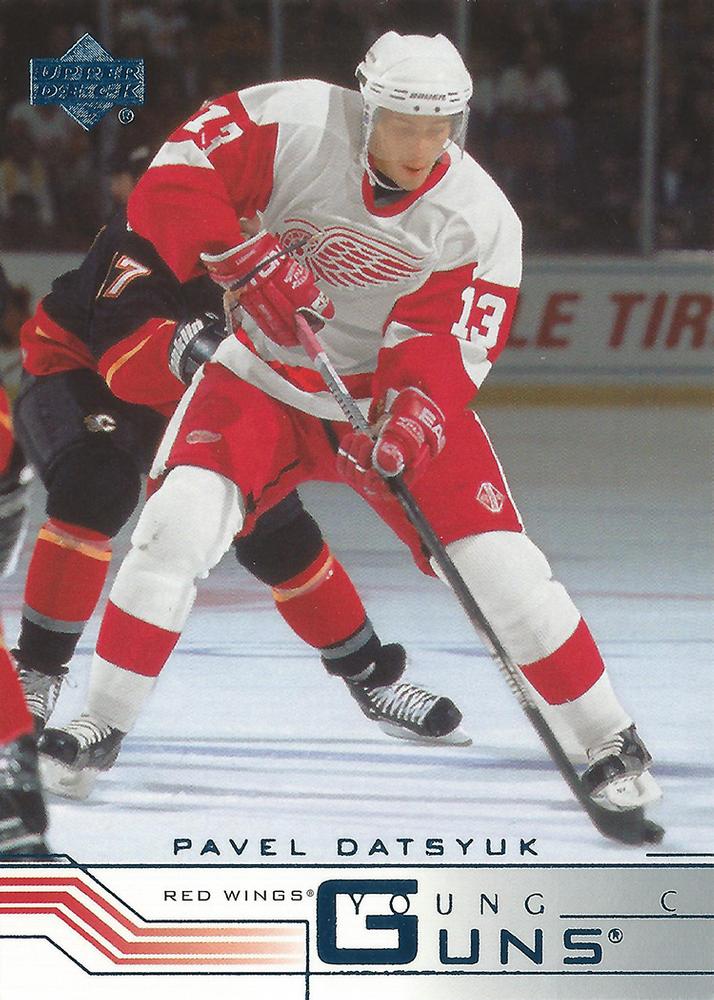
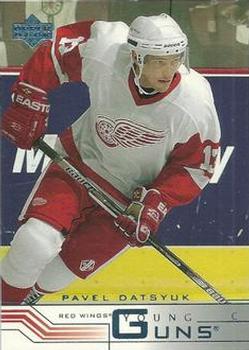
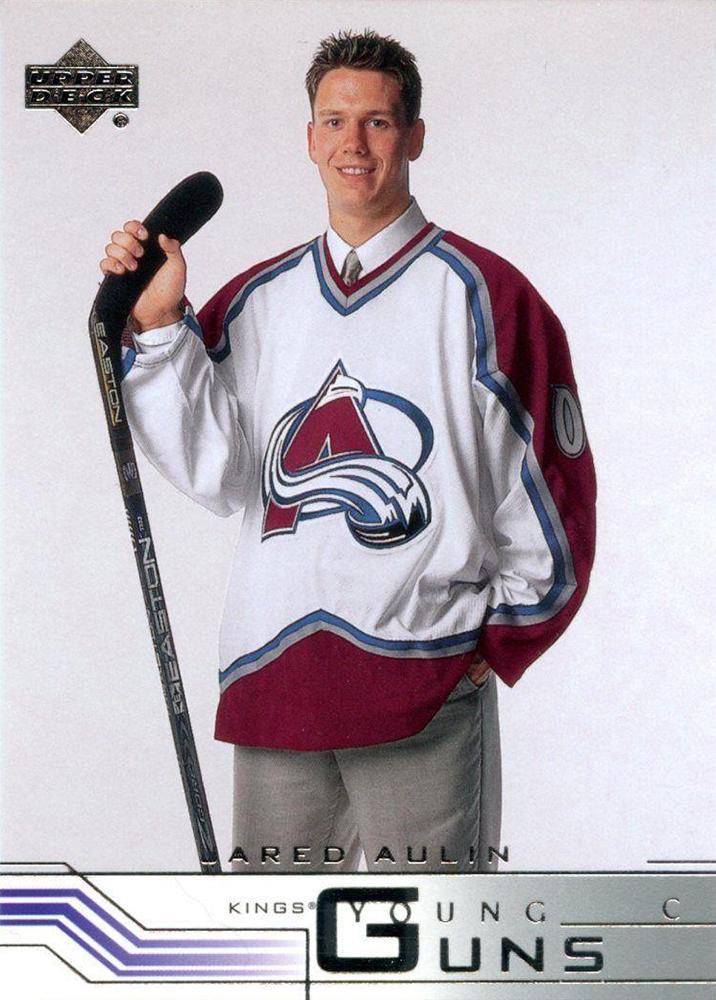
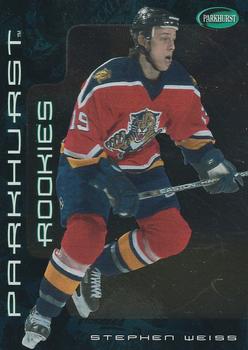
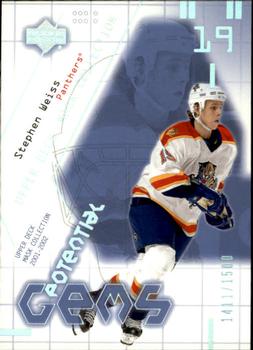

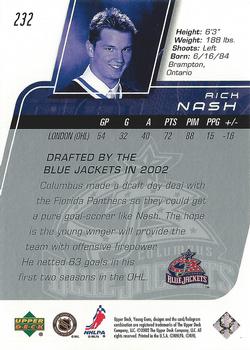
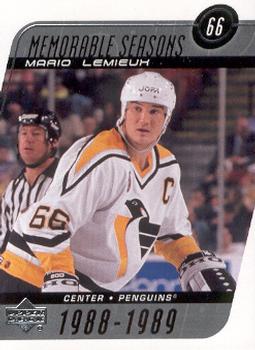

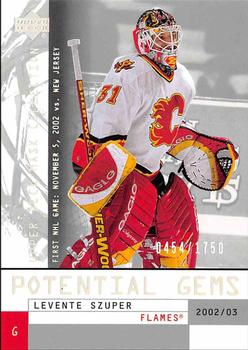


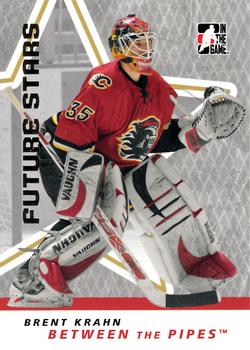
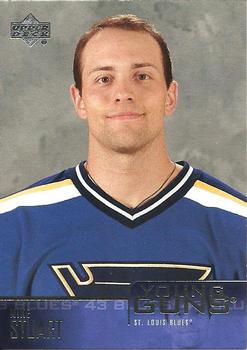
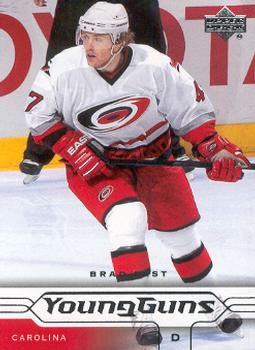
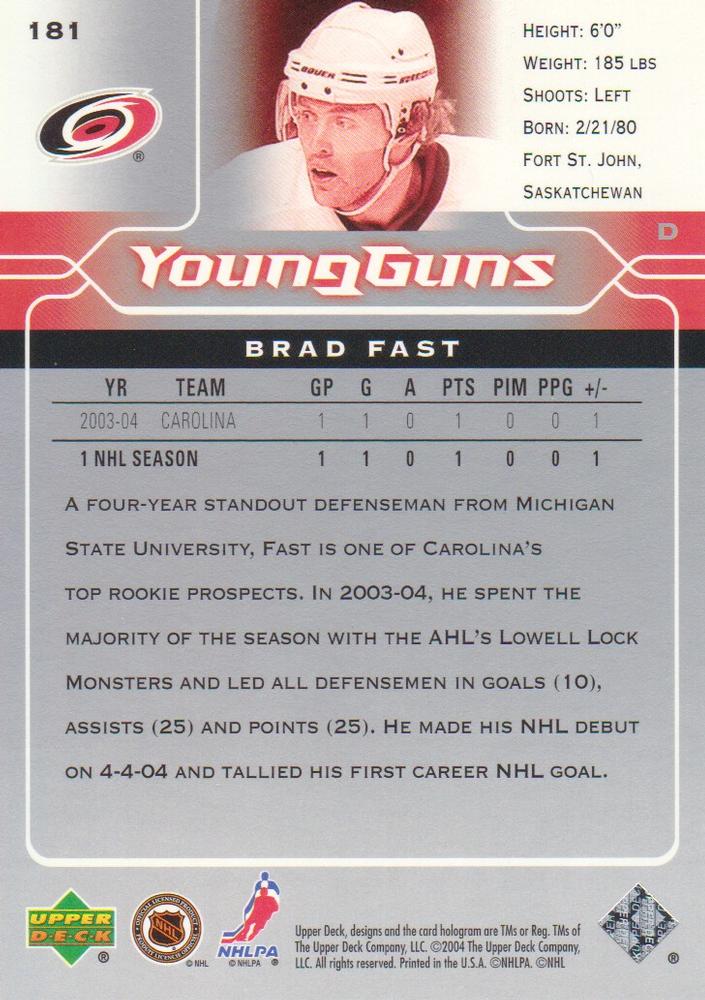
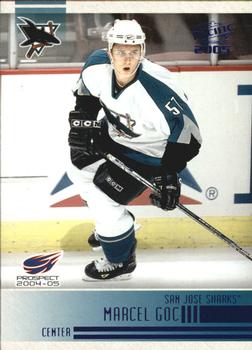
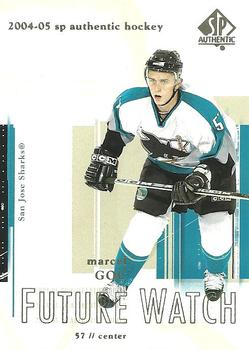
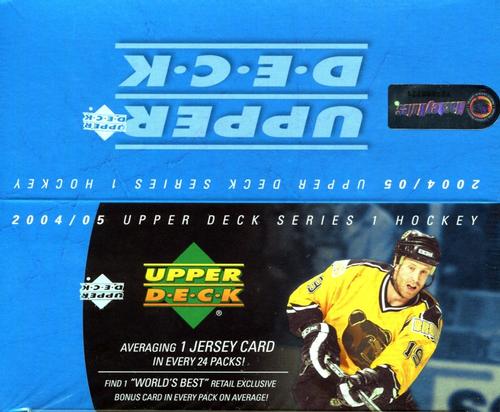
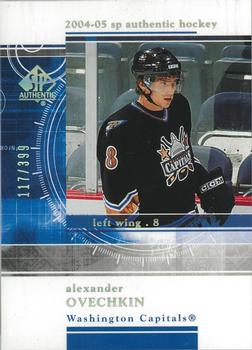
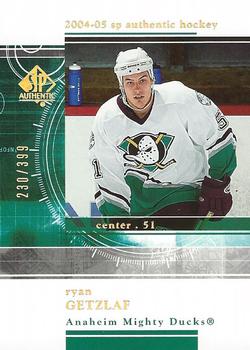
Another informative post. This one starts filling in the years when I was away from the hobby. I think 99/00 were the last packs of UD hockey I opened before taking a break. I pulled the Henrik YG. Doubt I still have it, because I sold off the collection in 2001 and held onto only a few thousand cards. I actually kept a pair of Sedins, but they are from the 1997-98 Black Diamond set.
ReplyDeleteI can see why it took you a few weeks to get to part 2. Geez! It's a good thing that no one's relying on me to do this series, as I'd be lucky if I could do one part per year!
ReplyDelete